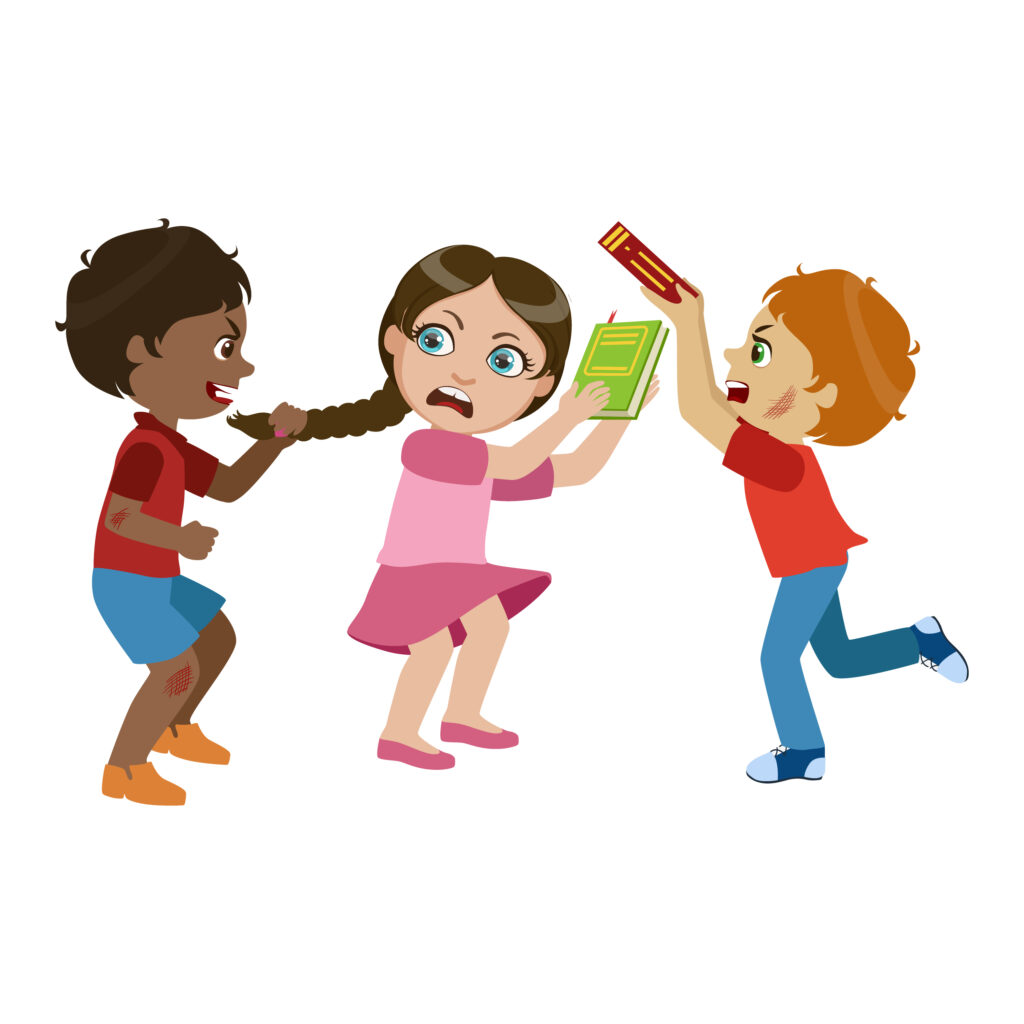“All behavior is communication” is a phrase attributed to family therapist and psychologist Paul Watziawick. Because there is no such thing as “anti-behavior,” even the avoidance of behavior is a form of communication. Children, especially children younger than 6 years old, can use physicality to replace verbal forms of communication. When stressed, physical communication can shift toward aggression through hitting, biting or kicking. Some children respond to all conflicts physically. Whether it’s slugging the older brother on the arm when upset or kicking when feeling sick, or even when a child gets an answer from a parent that she doesn’t like, the communication from the child can leave parents feeling upset, concerned and helpless.
What is “Normal” When it Comes to Physical Communication
Physicality in communication is fairly normal for young children. Understanding if there is a pattern to when children lose their ability to verbally express feelings can be helpful to rewiring the immediate physical response. Speech and language pathologist Megan Arnold explains, “Some kids feel more capable physically than they do with their ability to communicate verbally. If their communication has not been received by using words, that way of communicating is not rewarded and can’t be relied on. Instinctively, physicality is what they turn to first.” Between the ages 4-6 it is normal developmentally to have some forms of physical communication. It is important that kids learn what is appropriate and what forms of physical interaction are not allowed. For many young children, when they hit or kick, they will get an immediate response, even if the response is not a positive one.
Teaching Children About Physical Boundaries
One way to break the cycle of physical communication as the default is to speak with your child in a calm moment, when the last time they hit someone is a distant memory. Ask a family member who has been hit by your child to describe what it felt like both physically and emotionally when they were hit. Help the child to understand what it feels like to get hit, and how it impacts their relationship with the other person. Let them know that it is not okay to hit your family. Explain that aggressive behavior is wrong. Sometimes when young children hit older siblings or parents, the behavior is laughed off because the child is so little and the hitting doesn’t hurt. It’s important to interrupt the behavior even when it doesn’t cause physical pain. If there are no consequences for the behavior, there is no incentive for the child to change.
According to Arnold, it is essential to respond consistently each and every time the child crosses the boundary into physical communication. A simple break from the interaction, also known as a time-out” can be a very effective and simple way to stop the physical communication from continuing. Be consistent and firm in your approach if you want this behavior to stop.
Work on Repairing the Harm Caused by Physical Aggression
Immediately following a hit or kick or bite, make sure to attend to the person who was the target first, and make sure they are all right. Remove the child who hit from the situation, and give the child as little attention as possible. It’s important not to negatively reinforce aggressive behavior. If possible, try to speak with the child in a quiet, low voice. This will demonstrate that as the parent, you are calm and in control of your emotions. Have a conversation about the behavior when the child is calm and ready to talk; this might be as soon as within an hour, or as long as a day after the incident.
Use Other Types of Communication Tools
Expanding access to other forms of communication, rather than solely relying on verbal communication, is another good strategy to support further communication development. Using visuals or signs, rather than only words, is often helpful. Some families rely on a communication card that has simple phrases and images for younger children who don’t yet read, such as, “I’m mad right now,” and “Please leave me alone” and “I need a break.” Parents and children can brainstorm what phrases work for each member of the family during a calm moment. Children can decorate and design their own communication cards that will be kept in an easily accessible location in the home, like on the refrigerator. When upset, the child can point to the phrase, and the other family members will give the child the space they need. Being flooded by emotion often leads people not to have full access to their words, and communication cards can be an important communication bridge.
You may also want to teach your child to create some space between having a strong emotion, and physically responding to the emotion. Counting to 10, taking five deep breaths, learning some basics of mindfulness, all can help children create a tiny bit of space between big emotions and unhealthy reactions to those emotions.
Ariel Frager loves to get outside to surf, play and travel the world. She is a mental health therapist who specializes in working with kids. Ariel writes about outdoor and family adventures for Travel + Leisure, Gear Junkie, Girl Camper and various other publications.

